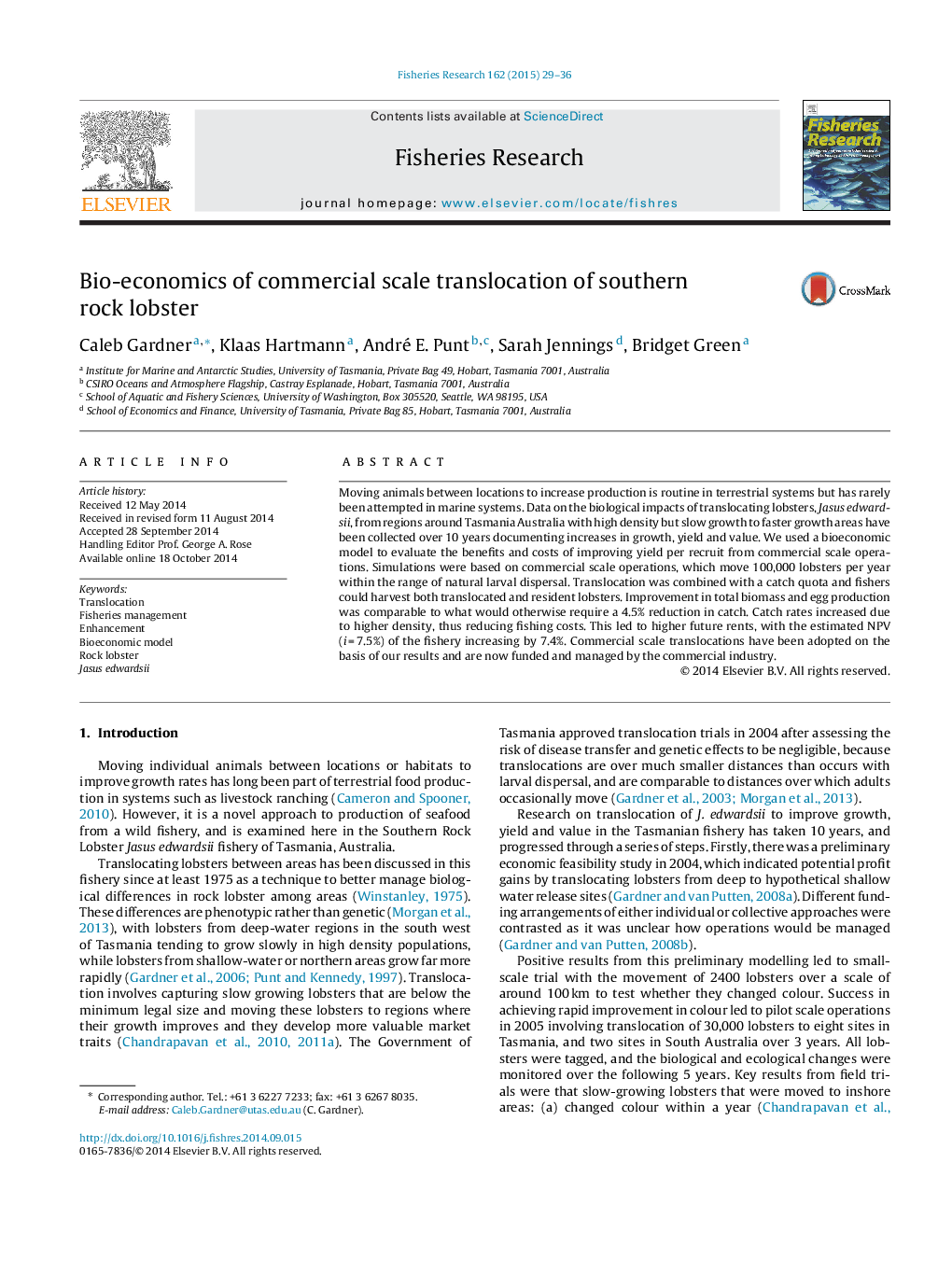| Article ID | Journal | Published Year | Pages | File Type |
|---|---|---|---|---|
| 4542855 | Fisheries Research | 2015 | 8 Pages |
•Translocation of animals can increase fisheries production in marine systems.•Costs and benefits of translocating lobsters are evaluated using bio-economic modelling.•Improvement in total biomass and egg production is equivalent to 4.5% catch reduction.•Translocation increased net present value of the commercial lobster fishery by 7.4%.•Commercial-scale translocation of lobsters is now underway due to these results.
Moving animals between locations to increase production is routine in terrestrial systems but has rarely been attempted in marine systems. Data on the biological impacts of translocating lobsters, Jasus edwardsii, from regions around Tasmania Australia with high density but slow growth to faster growth areas have been collected over 10 years documenting increases in growth, yield and value. We used a bioeconomic model to evaluate the benefits and costs of improving yield per recruit from commercial scale operations. Simulations were based on commercial scale operations, which move 100,000 lobsters per year within the range of natural larval dispersal. Translocation was combined with a catch quota and fishers could harvest both translocated and resident lobsters. Improvement in total biomass and egg production was comparable to what would otherwise require a 4.5% reduction in catch. Catch rates increased due to higher density, thus reducing fishing costs. This led to higher future rents, with the estimated NPV (i = 7.5%) of the fishery increasing by 7.4%. Commercial scale translocations have been adopted on the basis of our results and are now funded and managed by the commercial industry.
